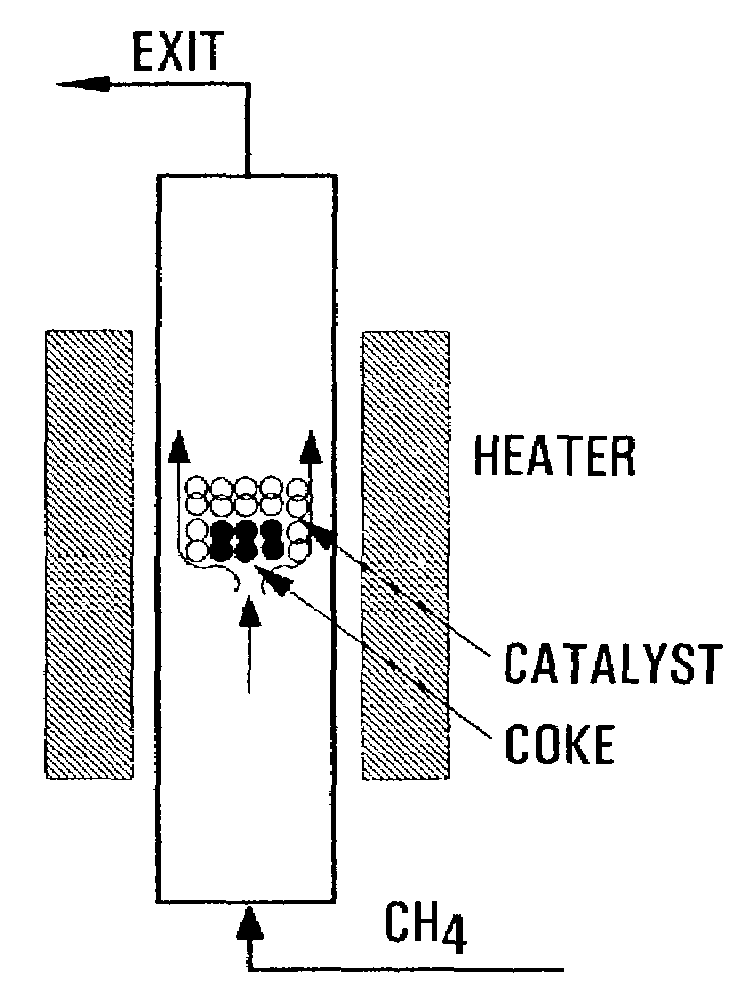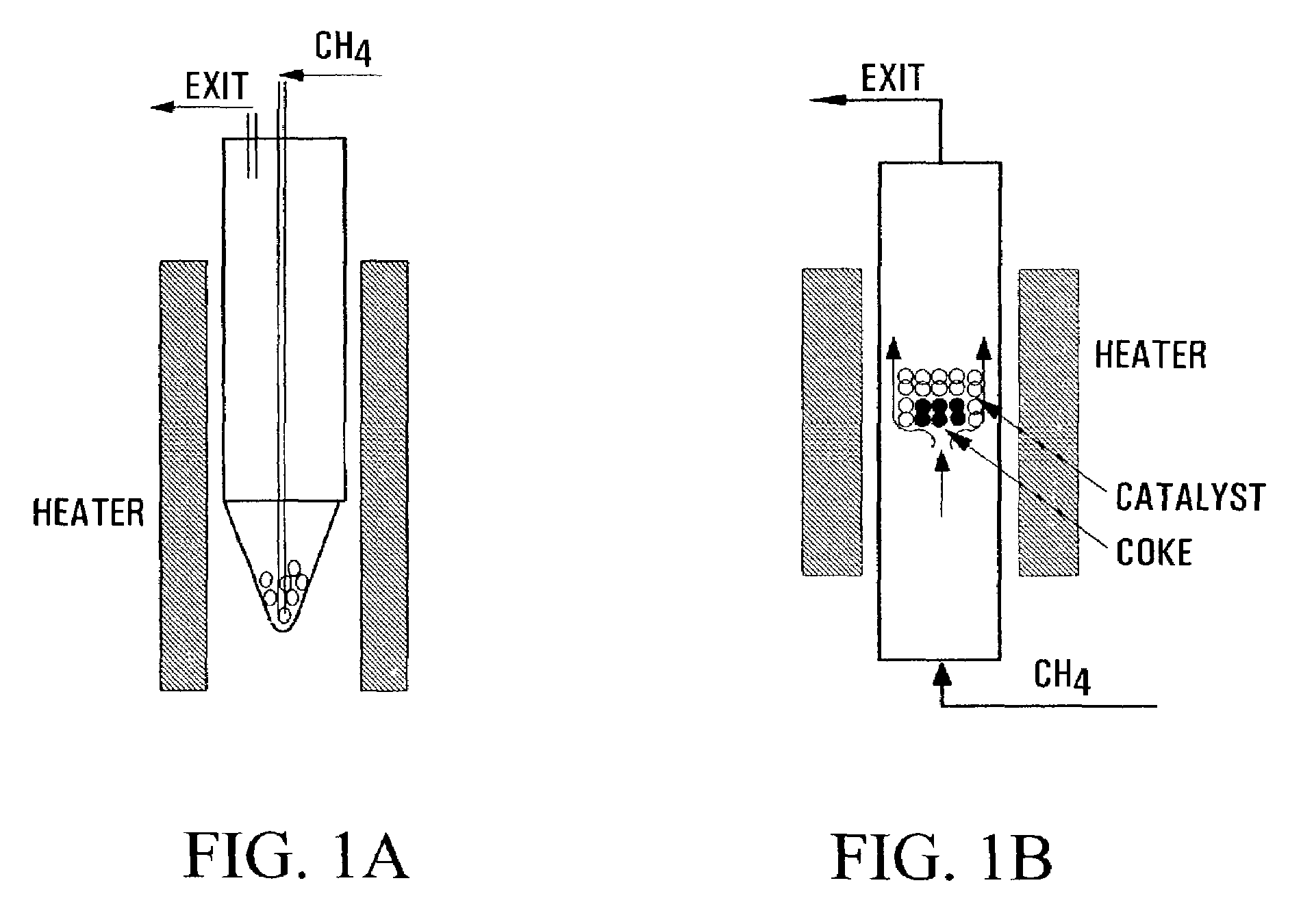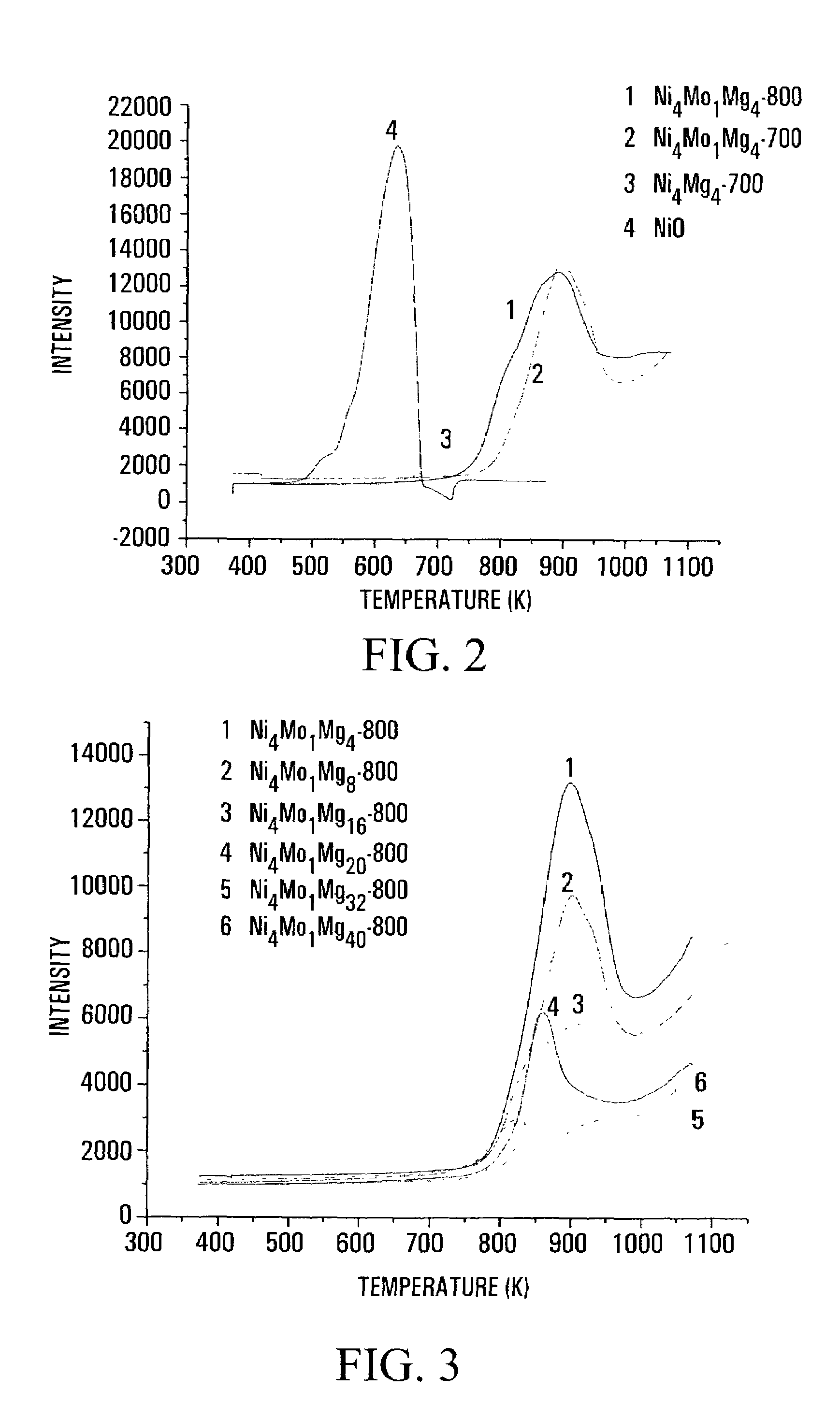Carbon nanotubes fabrication and hydrogen production
- Summary
- Abstract
- Description
- Claims
- Application Information
AI Technical Summary
Benefits of technology
Problems solved by technology
Method used
Image
Examples
example 1
[0118]5.80 g of Ni(NO3)2.6H2O, 0.882 g of H24Mo7N6O24.4H2O and 5.12 g of Mg(NO3)2.6H2O were mixed with 400 ml of de-ionized water. After stirring for 15 min, 11.8029 of citric acid was added; the resulting solution was further stirred. Simultaneously, water was evaporated by gradually heating to 473K. The mixture began to swell to some extent as it dried out. The resulting solid was crushed and calcined, first at 773K for 30 min and then at 1073K for 8 hours, to produce the Ni4Mo1Mg4-800 catalyst.
[0119]400 mg of the Ni4Mo1Mg4-800 catalyst was placed into a self-made fluidized-bed reactor. After being heated in hydrogen gas atmosphere with a flow rate of 17 L / h, from room temperature to 973K, the catalyst was pre-reduced for another 30 min at the same temperature. Then pure methane (>99.99%) was introduced at rate of 30 L / h-g-catal. After 2 h of reaction time, carbon nanotubes with multi walls were produced (about 3.278 g).
[0120]These raw carbon nanotubes were purified by mixing with...
example 2
[0121]2.9 g of Ni(NO3)2.6H2O, 0.441 g of H24Mo7N6O24.4H2O and 5.12 g of Mg(NO3)2.6H2O were mixed with 400 ml de-ionized water, stirred for 15 min, followed by the addition of 8.46 g of citric acid. The resulting solution was stirred and the water therein evaporated by gradually heating the solution to 473K. The mixture exhibited swelling to some extent when it dried out. Then the resulting solid was crushed and calcined, first at 773K for 30 min and then at 1073K for 8 hours, resulting in the Ni4Mo1Mg8-800 catalyst.
example 3
[0122]Using 2.9 g of Ni(NO3)2.6H2O, 0.441 g of H24Mo7N6O24.4H2O, 10.24 g of Mg(NO3)2.6H2O and 13.581 g of citric acid and following the procedure of Example 2, a sample of the Ni4Mo1Mg16-800 catalyst was prepared.
PUM
 Login to View More
Login to View More Abstract
Description
Claims
Application Information
 Login to View More
Login to View More - Generate Ideas
- Intellectual Property
- Life Sciences
- Materials
- Tech Scout
- Unparalleled Data Quality
- Higher Quality Content
- 60% Fewer Hallucinations
Browse by: Latest US Patents, China's latest patents, Technical Efficacy Thesaurus, Application Domain, Technology Topic, Popular Technical Reports.
© 2025 PatSnap. All rights reserved.Legal|Privacy policy|Modern Slavery Act Transparency Statement|Sitemap|About US| Contact US: help@patsnap.com



